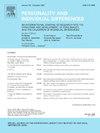The Hidden Narcissus in the Orchid: The relationship between sensory processing sensitivity, narcissism, self-esteem, and the HEXACO personality traits
IF 2.6
2区 心理学
Q1 PSYCHOLOGY, SOCIAL
引用次数: 0
Abstract
Initially conceptualized as a unique personality trait, Sensory Processing Sensitivity (SPS) has increasingly been criticized for its substantial empirical overlap with well-established personality traits such as the Big Five. When accounting for measurement errors, SPS subdimensions even overlap completely with traits such as neuroticism and openness to experiences. A recent study has further indicated a high association between SPS and vulnerable narcissism, but this has only been revealed at a manifest level (Jauk et al., 2023). With this study, we investigated the relationship between SPS, measured by the Highly Sensitive Person Scale, and established personality traits, including the HEXACO personality traits, narcissism, and self-esteem, through a latent variable approach. Using a sample of 1630 participants, latent regression analyses were conducted to explore how the traits mentioned above relate to the three components of SPS: Ease of Excitation (EOE), Low Sensory Threshold (LST), and Aesthetic Sensitivity (AES). Results indicated that neuroticism, openness to experience, and vulnerable narcissism are significantly associated with SPS components, with vulnerable narcissism showing the strongest association with EOE and LST and openness to experience with AES. These findings support the critiques regarding the postulate that SPS is a distinct construct within existing personality frameworks.
兰花中隐藏的水仙:感觉处理敏感性、自恋、自尊和 HEXACO 人格特质之间的关系
感觉处理敏感性(SPS)最初被认为是一种独特的人格特质,但由于其与五大人格特质(Big Five)等成熟的人格特质存在大量经验上的重叠而受到越来越多的批评。如果考虑到测量误差,感觉处理敏感性的子维度甚至与神经质和经验开放性等特质完全重叠。最近的一项研究进一步表明,SPS 与脆弱自恋之间存在高度关联,但这只是在表现层面上的关联(Jauk 等人,2023 年)。在本研究中,我们通过潜变量方法研究了高敏感人群量表测量的 SPS 与既定人格特质(包括 HEXACO 人格特质、自恋和自尊)之间的关系。通过对 1630 名参与者的样本进行潜回归分析,探讨了上述特质与高敏感人群量表的三个组成部分:易兴奋性(EOE)、低感觉阈限(LST)和审美敏感性(AES)之间的关系。结果表明,神经质、对经验的开放性和脆弱自恋与 SPS 要素有显著关联,其中脆弱自恋与 EOE 和 LST 关联性最强,而对经验的开放性与 AES 关联性最强。这些研究结果支持了对 SPS 是现有人格框架中一个独特结构这一假设的批评。
本文章由计算机程序翻译,如有差异,请以英文原文为准。
求助全文
约1分钟内获得全文
求助全文
来源期刊

Personality and Individual Differences
PSYCHOLOGY, SOCIAL-
CiteScore
8.50
自引率
4.70%
发文量
577
审稿时长
41 days
期刊介绍:
Personality and Individual Differences is devoted to the publication of articles (experimental, theoretical, review) which aim to integrate as far as possible the major factors of personality with empirical paradigms from experimental, physiological, animal, clinical, educational, criminological or industrial psychology or to seek an explanation for the causes and major determinants of individual differences in concepts derived from these disciplines. The editors are concerned with both genetic and environmental causes, and they are particularly interested in possible interaction effects.
 求助内容:
求助内容: 应助结果提醒方式:
应助结果提醒方式:


